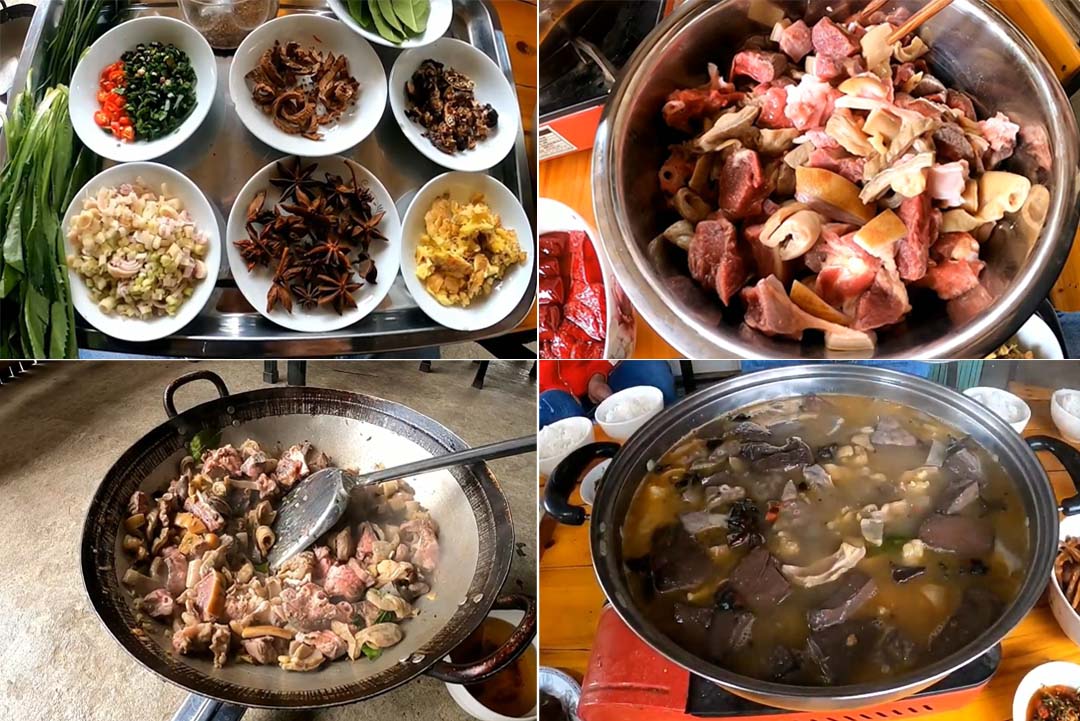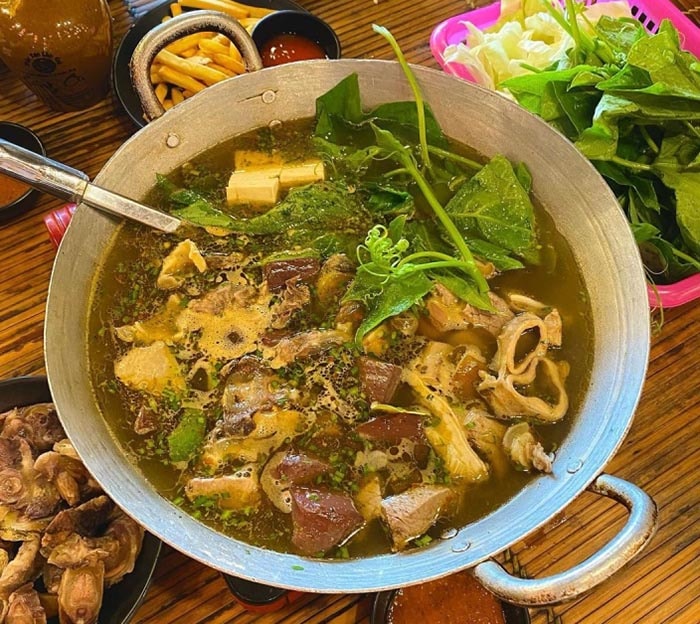Thắng Cố
1. Overview
Thắng cố is a traditional stew originating from the H’mong ethnic group and widely enjoyed in the mountainous regions of northern Vietnam, especially in Hà Giang. This centuries-old dish, made from horse meat and offal, is a symbol of community gatherings, cultural identity, and the rugged life of the highlands. It is often served during markets, festivals, and important social occasions.
2. Characteristics
-
Main ingredients: Horse meat, bones, internal organs (intestines, liver, heart), and sometimes beef or buffalo in modern versions.
-
Spices: A unique mix of over 10 mountain herbs and spices such as cardamom, cinnamon, star anise, lemongrass, and mắc khén (a pepper native to the region).
-
Appearance: A bubbling pot of dark, rich broth filled with meat and organ pieces.
-
Flavor: Strong, fatty, herbal, and slightly gamey — a complex taste that reflects the highland lifestyle.
-
Texture: The broth is oily and warming, while the meat varies from tender to chewy depending on the cut.
3. How It's Prepared
Thắng cố is traditionally cooked in large iron pots over a wood fire:
-
Butchering the animal: The entire horse is used, including the head, bones, and offal, cleaned thoroughly.
-
Simmering: Meat and organs are boiled together with bones for hours to create a rich broth.
-
Seasoning: Wild spices and herbs are added during cooking, giving the dish its signature aroma.
-
Serving: It is often kept simmering and served directly from the pot in large communal bowls.
4. Cultural Significance
-
Ethnic identity: Thắng cố is a cornerstone of H’mong cuisine, eaten during New Year celebrations, weddings, or local fairs.
-
Communal spirit: Often enjoyed at chợ phiên (mountain markets) where locals gather to eat, drink corn wine (rượu ngô), and socialize.
-
Tradition and pride: For many ethnic minorities, thắng cố is a dish of pride that connects them to their heritage and ancestors.
5. How to Enjoy
Thắng cố is best enjoyed hot, served with fresh herbs, salt with chili, and a small glass of strong local corn wine. Its rich, fatty taste pairs well with the bitterness of mountain greens. While it may be intense for first-time visitors, those who embrace the flavor often find it unforgettable.



